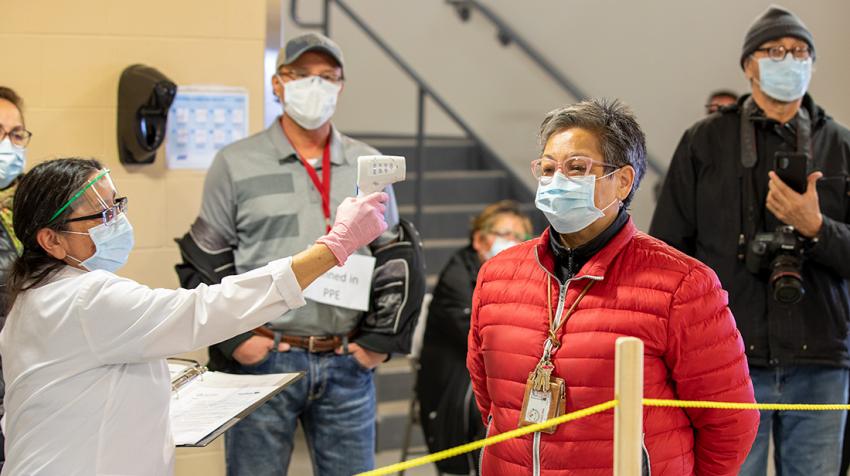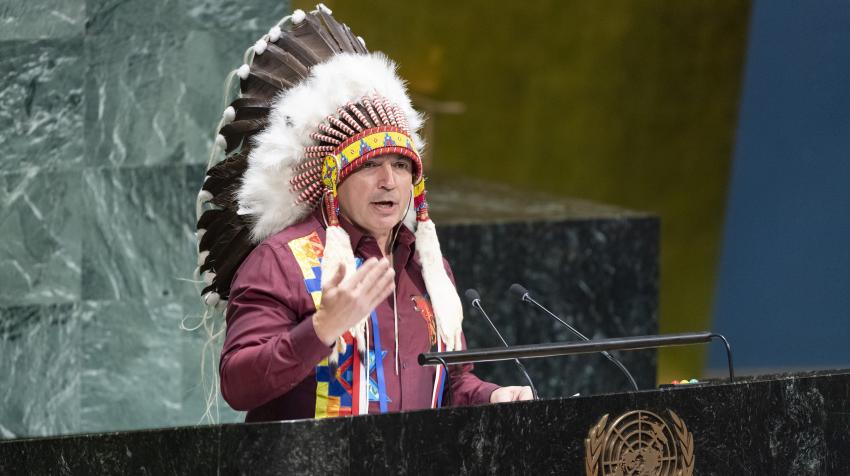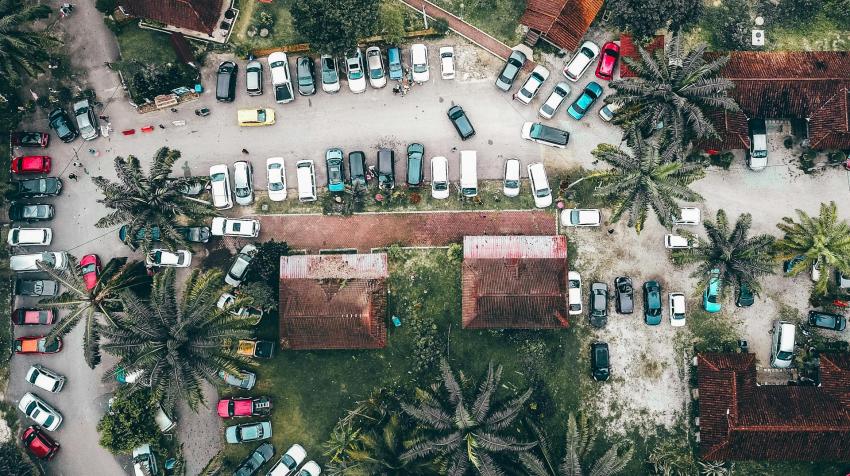25 May 2020
When they heard the first reports of the coronavirus outbreak, leaders in the Pasqua First Nation in western Canada became worried about what would happen if the disease spread to their community. In early January they began to prepare for the worst. Pasqua Chief Todd Peigan recently told me how, thanks to these early preparations, his First Nation was able to set up its own emergency distribution system that now delivers food baskets to Elders and others so that they can stay safely at home.
This inspiring example of how indigenous peoples in Canada have mobilized to respond to the global COVID-19 crisis is just one among many of Indigenous experts have adapted public health information to make it more accessible to our people. The Morning Star Lodge, an indigenous health research lab, has been translating posters and factsheets into some of the most widely used indigenous languages. A number of First Nations have established their own protocols for entry into their lands and communities to try to prevent the spread of the disease.
I’m proud of these initiatives by my indigenous sisters and brothers to try to curb the spread of infection in our communities. In my own indigenous language, Cree, we say, “Nīsōhkamātowin wāhiyaw itōhtēmakan” which means “Helping one another goes a long way”. I know that, ultimately, the foresight, creativity and leadership of indigenous peoples around the world will be key to getting through this current crisis and to rebuilding in ways that make us stronger and more resilient.
We must not, however, underestimate the magnitude of this challenge or the severity of the risks faced by indigenous peoples around the world.
Viruses don’t discriminate, but governments, institutions and social systems do. Infectious diseases like COVID-19 follow the channels carved by centuries of prejudice and inequality. The most marginalized members of society are the ones who are least able to take precautions against infection, who have limited access to proper health care if they become sick, and who are most likely to be stigmatized and condemned because of it.
All of this is especially true for indigenous peoples.
Because of colonialism, and all the ways that indigenous peoples have been pushed aside, marginalized and impoverished, pandemics like COVID-19 pose a vastly disproportionate threat to our health and well-being. What’s more, the same patterns of racism and discrimination that put indigenous peoples at increased risk, also make it more difficult for indigenous governments and institutions to keep our people safe.
This is the hard truth faced by indigenous peoples in every region of the world. It is no less true in Canada, despite the overall high quality of life enjoyed by most people in this country and a generally robust national health care system that is the envy of many.
Along with other leaders, I have been sharing the message that frequent and thorough handwashing is a first line of defense against infection. However, decades of State underfunding and neglect mean that many First Nations in Canada do not have reliable access to the safe, clean water needed for something as basic as washing your hands. This is something that would be unimaginable for most other Canadians.
Similarly, the persistent problem of overcrowded government-supplied housing in many First Nations communities creates unique hardships for families now confined to their homes. Realistically, there can be little real physical distancing under the desperate conditions in which many large, extended families are forced to live.
Factors such as these have already led to longstanding, severe health problems among First Nations in Canada. Yet despite our urgent needs, access to medical services is often negligible or non-existent. In many of our communities, the nearest doctor is a long drive—or even an airplane flight —away.
Respect for the inherent right of indigenous peoples to be part of all decisions affecting our lives and futures is the foundation for informed and effective action.

To its credit, Canada’s response to the current crisis has included welcome new resources to help address the specific needs of indigenous peoples. Although much more needs to be done, this is a good start. I would urge all governments around the world to recognize the unique context and diverse needs of indigenous peoples and work with them to ensure that they have the necessary resources to protect their communities.
Clear communication, partnership and collaboration are more important now than ever. There’s good reason that consultation and consent are central to the United Nations Declaration on the Rights of Indigenous Peoples. Respect for the inherent right of indigenous peoples to be part of all decisions affecting our lives and futures is the foundation for informed and effective action.
A particularly important aspect of inclusion is ensuring that indigenous women’s voices and perspectives are central to the design and delivery of pandemic responses. We all know who bears the greatest burden of caring for our families in times of crisis. Just as we honour the caregivers on the frontlines of hospitals and clinics, we need to honour the caregivers who are in the lead in our communities. More importantly, we need to listen to them.
As I say this, I am mindful of the growing evidence that long term, stay-at-home orders are leading to increased stress and domestic violence against women. Such concerns take on an even greater urgency for indigenous communities, given that in Canada, and in many other places in the world, indigenous women already face significantly higher levels of violence. This violence is rooted in the history of destruction and dehumanization of our indigenous sisters under colonialism, and the severe social strains experienced by our communities. We must not allow the current crisis to make a terrible situation even worse.
States and indigenous peoples must also be able to collaborate in order to get the facts right. When indigenous peoples are in the minority, our distinct experiences and needs tend to be rendered invisible. We need to work together to ensure that COVID-19 responses are based on the best information possible. This means that data about indigenous people needs to be gathered and analysed with the active participation of indigenous peoples, so that such data can be used to inform prevention measures and address medical treatment needs.
I completely agree with United Nations Secretary-General António Guterres who has said, “By respecting human rights in this time of crisis, we will build more effective and inclusive solutions for the emergency of today and the recovery for tomorrow.” Fortunately, the framework for doing so has already been set out in two global, consensus instruments.
The 2030 Agenda for Sustainable Development commits States to “leave no one behind” and to “reach the furthest behind first”. The United Nations Declaration on the Rights of Indigenous Peoples tells us how this can be achieved. The Declaration affirms Indigenous peoples’ right to self-determination; calls on States to support us in pursuing our own unique paths to health and well-being; and urges additional, special measures to protect the rights of indigenous women, Elders and other members of our community who are at greatest risk.
The UN Chronicle is not an official record. It is privileged to host senior United Nations officials as well as distinguished contributors from outside the United Nations system whose views are not necessarily those of the United Nations. Similarly, the boundaries and names shown, and the designations used, in maps or articles do not necessarily imply endorsement or acceptance by the United Nations.




